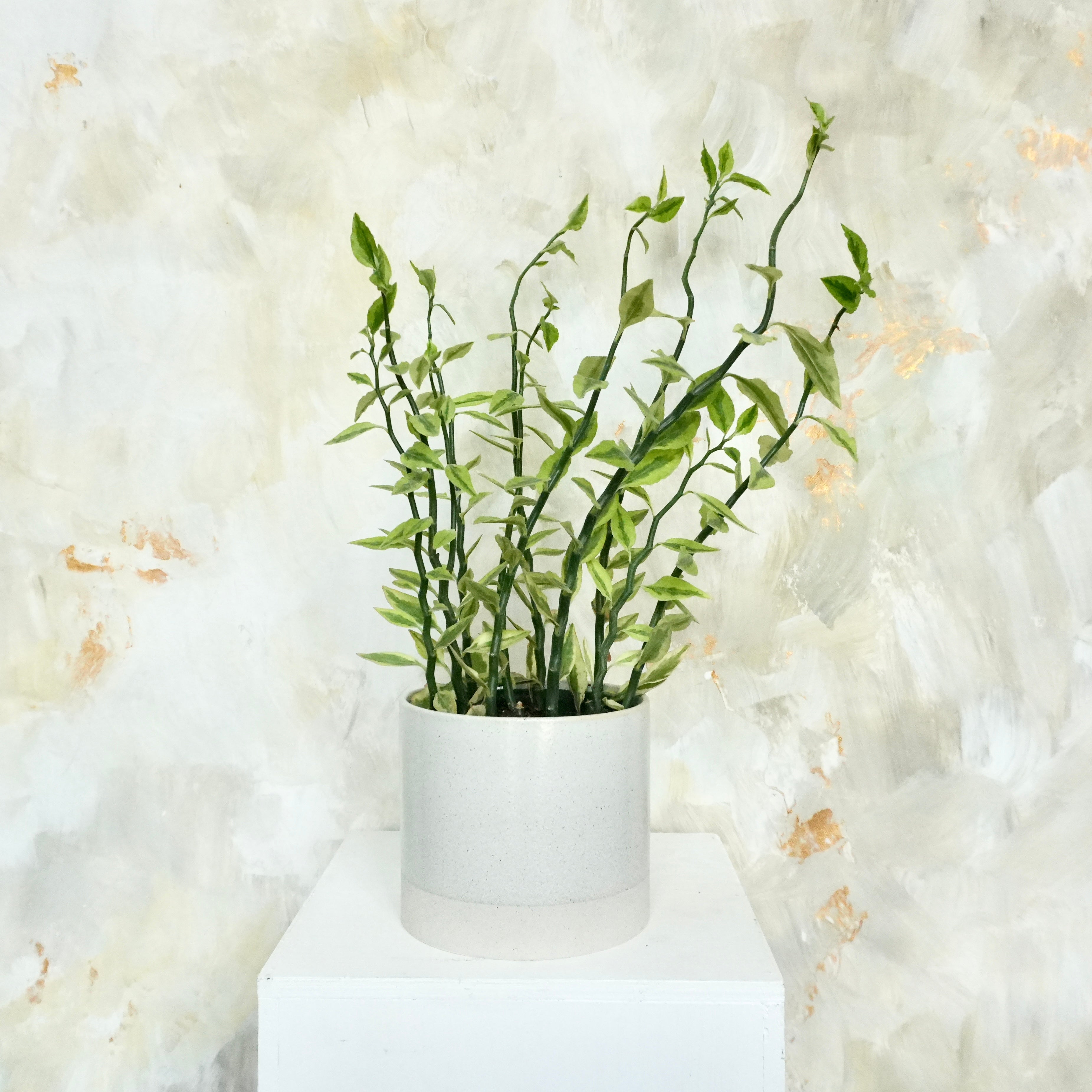
Euphorbia Tithymaloides (Devil’s Backbone)
Euphorbia tithymaloides, commonly known as “Devil’s Backbone”, is a striking succulent native to tropical and subtropical regions of the Americas. Named for its distinctive, zigzagging stems that resemble a crooked spine, this plant adds an architectural flair to any indoor space. Its fleshy green leaves may be variegated with creamy white or pink edges, and it can occasionally produce small red or pink tubular flowers. Devil’s Backbone is fast-growing, drought-tolerant, and highly adaptable, making it an excellent choice for both beginner and experienced plant enthusiasts.
Pet Safe
No, like most Euphorbia varieties, Devil’s Backbone contains a toxic milky sap that can irritate the skin and is harmful if ingested by pets or children. Keep out of reach and handle with care.
Light
Devil’s Backbone thrives in bright, indirect light and can tolerate some direct sun, especially in the morning. A South- or West-facing window is ideal. Too little light can cause legginess, while too much direct sun can scorch the leaves.
Water Requirements
This plant prefers its soil to dry out between waterings. During spring and summer, water thoroughly when the top 1–2 inches of soil are dry, typically every 1–2 weeks. In the fall and winter, reduce watering to every 3–4 weeks. Be careful not to overwater, as this can lead to root rot.
Watch out for…
When pruning, watch out for white, sticky sap, as this can be irritating to the skin and eyes. If you notice drooping or dropping leaves, this is typically a sign of over watering or insufficient light. Lastly, Devil’s Backbone can attract pests such as mealy bugs or spider mites. Wipe down the stems and leaves to keep them clean.
Similar care to…
Since Devil’s Backbone is a succulent their care needs are shared with other low-water succulents and drought-tolerant houseplants.




Leave a comment
This site is protected by hCaptcha and the hCaptcha Privacy Policy and Terms of Service apply.